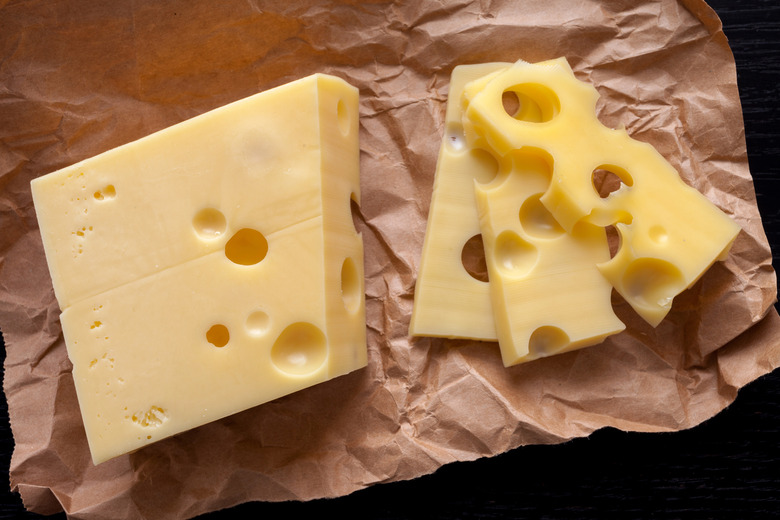Why Does Swiss Cheese Have Holes?
Many people eat sliced Swiss cheese on their sandwiches and melted on burgers, but how much do you really know about this delicious dairy food? Swiss cheese isn't just a single type of cheese at all. Rather, Swiss cheese is an entire category of cheeses including varieties like Emmental and Appenzeller. The original Swiss that most others are compared to is Emmental, a cheese from abroad that Americans really should try. Swiss cheeses are all of medium-hard texture and have one thing in common: They're riddled with holes. But just why are there holes in Swiss cheese?
17 Reasons You Should Eat More Cheese
Back in the day, scientists and cheese makers believed the holes in Swiss cheese were the result of bacteria that grow during aging. S. thermophilus, Lactobacillus and P. shermani are all added to cow's milk to make the cheese. These bacteria produce lactic acid that P. shermani bacteria then consume. While consuming the lactic acid, the P. shermani emit carbon dioxide gas. This, scientists believed, led to tiny air pockets that created the holes. In 1917, American scientist William Clark published a detailed account of this explanation, and it was widely accepted for nearly 100 years.
However, as reported by The New York Times, a study in 2015 blew a giant hole in his theory. A Swiss agricultural institute called Agroscope did some investigating after noticing the air pockets in wheels of Swiss were getting smaller. Turns out, more than bacteria is at work to burrow these holes.
During the traditional milking process involving barns and buckets, tiny particles of hay or other material often fall into the milk. At first, these particles are too small to see and so are not removed. But during aging, they weaken the otherwise sturdy structure of the curd. The bacterial gas accumulates in these spots (and only these spots) to create the holes so often seen in a slice of Swiss cheese.
So why were the holes shrinking and disappearing? Many modern dairy farms have abandoned traditional milking processes in favor of cleaner, more efficient methods. Thanks to mechanization and automation of milking, it's no longer as likely for hay to fall into milk. As a result, modern Swiss cheese has fewer holes. So that's one food mystery solved — here are the explanations that solved 18 more.
